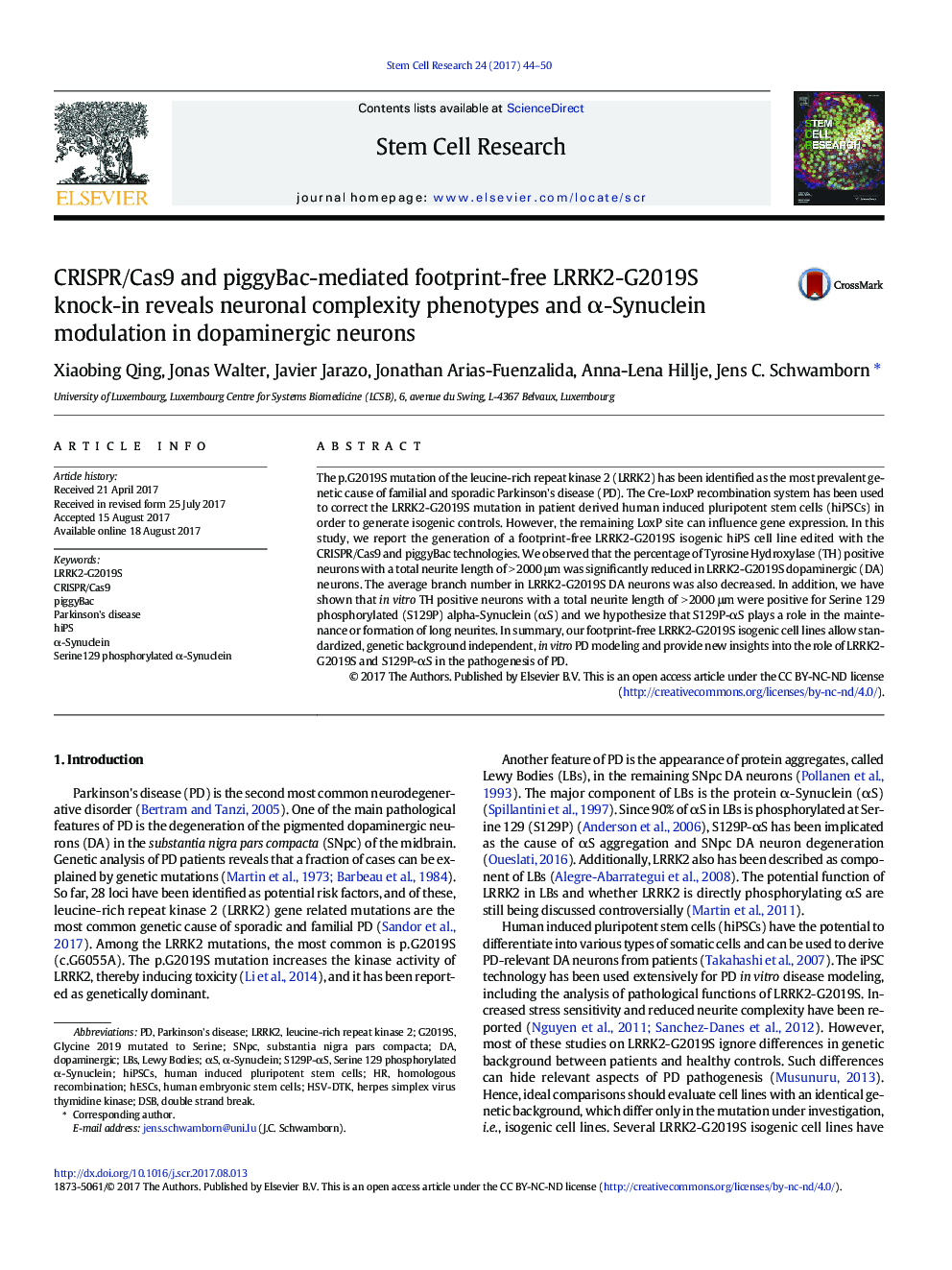| Article ID | Journal | Published Year | Pages | File Type |
|---|---|---|---|---|
| 5522684 | Stem Cell Research | 2017 | 7 Pages |
â¢Generation the first footprint-free LRRK2-G2019S isogenic cell lineâ¢LRRK2-G2019S reduces dopaminergic neurite complexity.â¢Detection of phosphorylated alpha-Synuclein in neurons with particularly long neuritesâ¢Reduction in the amount of S129P-a-Syn neurites upon presence of LRRK2-G2019Sâ¢Rescue of Parkinson's disease associated cellular phenotypes by drug treatment.
The p.G2019S mutation of the leucine-rich repeat kinase 2 (LRRK2) has been identified as the most prevalent genetic cause of familial and sporadic Parkinson's disease (PD). The Cre-LoxP recombination system has been used to correct the LRRK2-G2019S mutation in patient derived human induced pluripotent stem cells (hiPSCs) in order to generate isogenic controls. However, the remaining LoxP site can influence gene expression. In this study, we report the generation of a footprint-free LRRK2-G2019S isogenic hiPS cell line edited with the CRISPR/Cas9 and piggyBac technologies. We observed that the percentage of Tyrosine Hydroxylase (TH) positive neurons with a total neurite length of > 2000 μm was significantly reduced in LRRK2-G2019S dopaminergic (DA) neurons. The average branch number in LRRK2-G2019S DA neurons was also decreased. In addition, we have shown that in vitro TH positive neurons with a total neurite length of > 2000 μm were positive for Serine 129 phosphorylated (S129P) alpha-Synuclein (αS) and we hypothesize that S129P-αS plays a role in the maintenance or formation of long neurites. In summary, our footprint-free LRRK2-G2019S isogenic cell lines allow standardized, genetic background independent, in vitro PD modeling and provide new insights into the role of LRRK2-G2019S and S129P-αS in the pathogenesis of PD.
